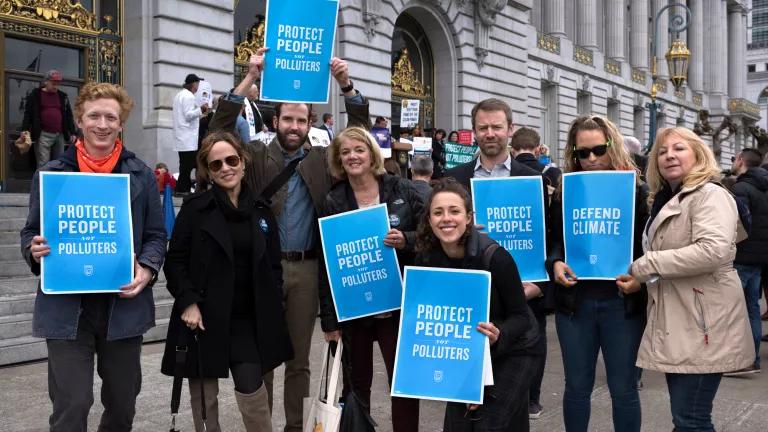This post was co-written with Sarah Lyn Vollmer.
The U.S. and the five Nordic countries (Denmark, Finland, Iceland, Norway, and Sweden) committed to further climate action when they announced a set of commitments to further implement action after the Paris Agreement. The countries agreed to stronger measures around the Arctic, steps to drive even more international action this year, and actions to collaborate spurring more climate action around the world. These commitments signal the continued momentum after Paris to ensure that countries are moving domestically and internationally to drive even greater action.
Here are some of the highlights and some context (full statement and White House fact sheet).
Stronger Arctic conservation including around oil and gas exploration.
These countries committed to: “work towards the highest global standards, best international practice, and a precautionary approach, when considering new and existing commercial activities in the Arctic, including oil and gas operations.” This builds upon a similar commitment that the US and Canada agreed to earlier this year, which now means that the majority of the Arctic countries have committed to apply climate objectives to any economic activity in the region. As the Washington Post headline points out these countries agreed to a “climate test” for activities in the Arctic. As my colleague points out: the only way to actually meet this objective is to stop searching for frontier oil that won’t arrive for decades—and which we must not burn in any climate-safe scenario.
Supporting agreement to phase-down super greenhouse gases under the Montreal Protocol.
One of the biggest international climate wins this year would be to secure an agreement to phase-down hydrofluorocarbons (HFCs) under the Montreal Protocol. That is why these countries affirmed: “their commitment to adopt a Montreal Protocol HFC phasedown amendment in 2016, and intend to provide additional support through the Protocol’s Multilateral Fund following adoption of an amendment for its implementation”. After the most recent Montreal Protocol meeting in Geneva in early April, four proposed HFC amendments were consolidated into a negotiating text, and countries will now hopefully come to a strong agreement this July and October during their final two meetings of this year.
Addressing oil and gas methane pollution.
These countries are major players in oil and gas development so they have some leaky methane. As a result, the Nordic countries announced that they: “pledge to keep their respective methane emissions from this sector at or below current levels”. This builds upon the national commitment from the U.S. and Canada to cut their methane pollution 40 to 45 percent by 2025. The U.S. finalized a next step towards that goal when it finalized standards for new oil and gas wells, but in order to reach that target it is critical that EPA also set standards for pollution from existing oil and gas operations all across the country that account for the vast majority of the problem. And we are hopeful that the Nordic countries will take stronger action domestically and help put further pressure on oil and gas companies to deliver even more action.
Working to address deforestation.
Norway has been one of the leaders in efforts to address deforestation around the world. And the U.S. has supported a number of efforts to address this major source of global warming pollution. These countries announced that they will support efforts to address deforestation and illegal logging and spur more: “private sector efforts to eliminate deforestation from the production of commodities such as palm oil, pulp and paper, cattle and soy”. In addition, the U.S. and Norway signaled that they will agree to a new detailed set of actions in the coming months.
Getting the aviation sector to address its climate pollution.
The aviation sector is the seventh largest emitter in the world if it was a country. And its emissions are projected to triple by 2050 if further action isn’t taken. The aviation sector was one of the two industries (the other is shipping) that were noticeably absent from the Paris Agreement. That is why countries are working to secure new actions from the aviation sector to curb its growing carbon pollution. The U.S. and Nordic countries announced their: “commitment to work together and through the ICAO to reduce international aviation’s climate impact…by adopting a strong global market-based measure (GMBM) to enable carbon neutral growth from 2020”. Let’s hope the global community can finally address this growing source of carbon pollution.
Supporting the Paris Agreement.
Countries accounting for around 50 percent of the world’s emissions have announced that they will formally join the Paris Agreement this year. Of the Nordic countries, Norway has already pledged that it will early this year, and today Iceland has announced that they also plan to ratify the agreement this year. The remainder of the Nordic countries will join the Paris Agreement with the rest of the European Union countries, which will likely happen next year.
Friday the 13th is turning out to be a day of good fortune, after all. International climate action continues to roll in the right direction after countries finalized the Paris Agreement.




